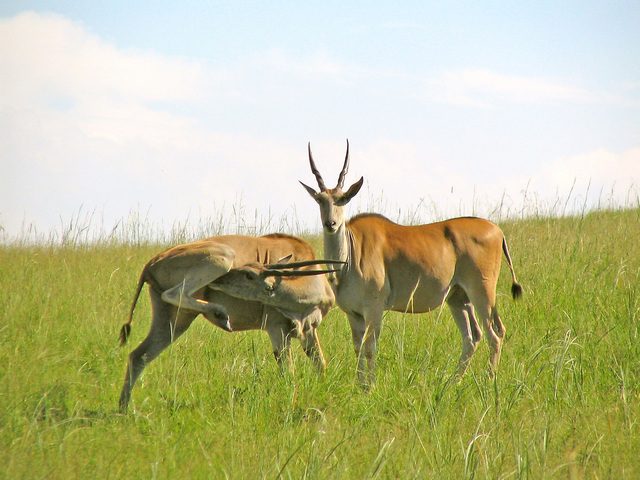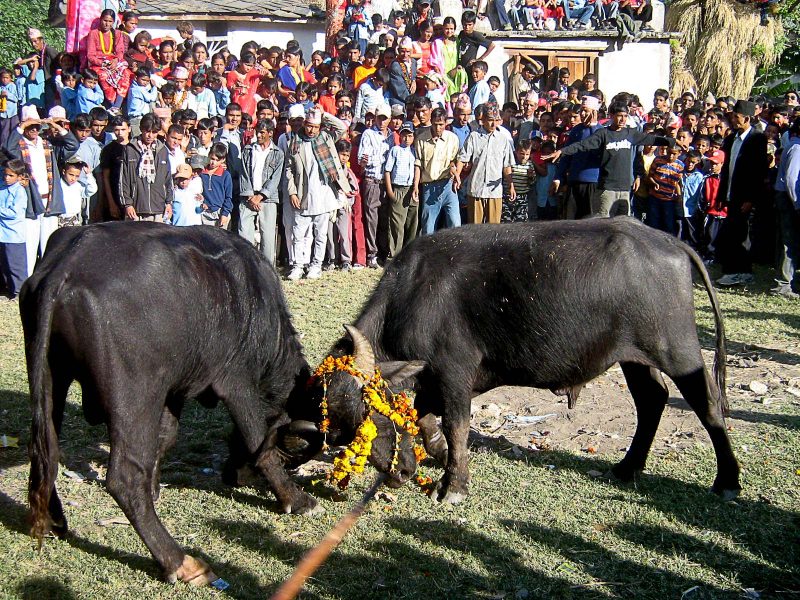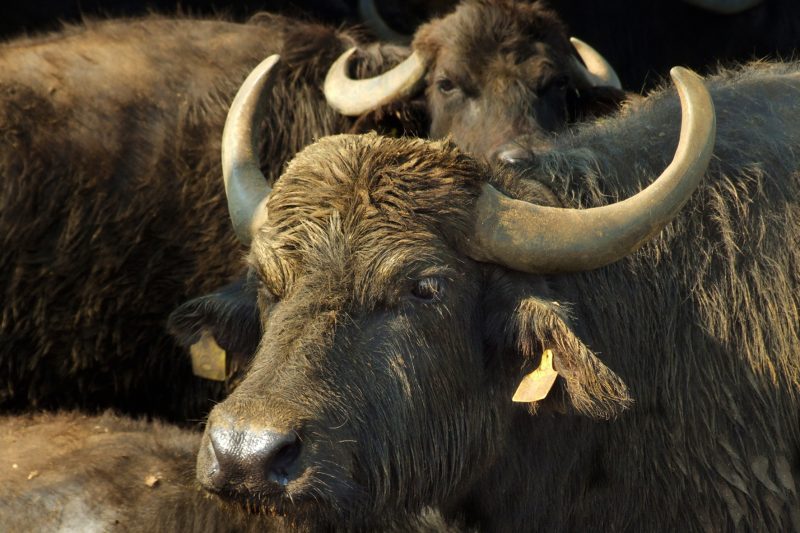Big Plains Wild Herbivores Of Kenya
Eland
The biggest antelope in the world is eland, with a robust body that can weigh up to 600 to 680 kg. The adults of these healthy animals have a somewhat different social structure than the other antelopes. The dominant males of this species are solitary animals who like to live its life like a lone nomad. The most potent ones make a brash clicking sound as they walk, which can be heard by their rivals more than a couple of miles away. They assess the strength of each other by locking horns and throwing the opponent to the ground with great force. The younger bachelors live in groups of three, while females gather in groups whose size vary from day-to-day. The males of eland tend to move around less than womenfolk who often stray away from the herd. The horn of a female eland grows up to 60 to 63 cm, and that of a male eland grows twice as long.
Wildebeest
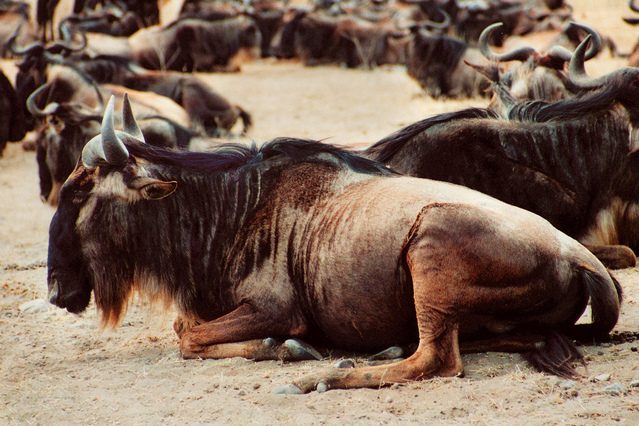
Wildebeest
The awkward gnu earned the name wildebeest, meaning wild beast, because of the menacing appearance presented by its shaggy mane, large head, pointed beard, and curved, sharp horns. The wildebeest is an antelope family member, although its disproportionately large forequarters and heavy build make it look bovine. In fact, it is a constant source of food for the predators of the Kenyan savannas such as lions, cheetahs, hyenas, and wild dogs.
The bulky body of an adult wildebeest can reach up to 8 feet in length if lived to its full lifespan. Wildebeests, both males, and females weigh up to 600 to 650 pounds and stand 4.5 feet tall. Quite contrary to popular myth, both genders grow horns, which can be deadly when attacked. Calves are born in March each year, at the onset of the rainy season. They learn to walk within minutes and can keep up with the herd within days of birth. Wildebeests can live up to 20 years. The natural habitat of wildebeests comprises of the green leas, copses, and open woodlands. They travel in large herds that can be easily spotted by safari travelers and are continually grazing the forest. They migrate northward looking for greener pastures. Weather dictates this spectacular northward migration, but usually, takes place in June. The wildebeest migration is one of the most magnificent natural wildlife spectacle on earth that attracts tourists from all over the world.
Buffalo
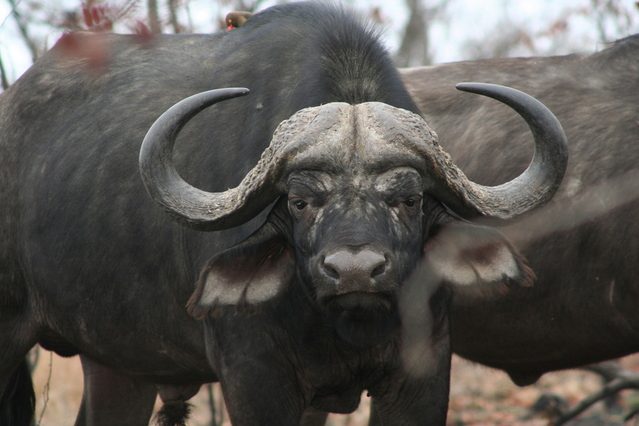
Buffalo
The most massive and formidable of Kenya’s bovids is the buffalo. It is a familiar sight for visitors to Kenya parks. Although buffalos are susceptible to cattle-borne diseases, they are immune to the bovine sleeping sickness that afflicts domestic cattle in Kenya. This massive animal is heavier than cows but is not very tall and has relatively short legs. Their horns are thick and full, with a broad shield that covers the forehead. Buffalo thrives in all types of grassland habitat, from the swamp to dry savanna and from lowland floodplains to glades. But a majority of them occur in well-watered savannas, bordering the lakes and rivers, where herds of 1,000 are common. Their habitat also includes refuge from danger and heat in the form of woodland, reeds, thickets, pastures, and access to wallows, water, and mineral licks.
The buffalo depends more on the quantity of the grass that it eats than the quality because it must eat tons of it. To enable it to take big bites, it has a long muzzle and incisor teeth. It uses its tongue to bundle grass. It can digest coarse and tall plants than most other ruminants. When grass is scarce, buffaloes browse woody vegetation. Clans of related offspring and females socialize in subgroups. A hierarchy determines which bulls breed. Lone bulls and all-male herds are predominately sedentary and old. Calves are born after a gestation period of nine months. Weeks pass before they can keep up with a pack. Until then, they are under their mothers’ protection. Groups also cooperatively defend members.
Rhinoceros
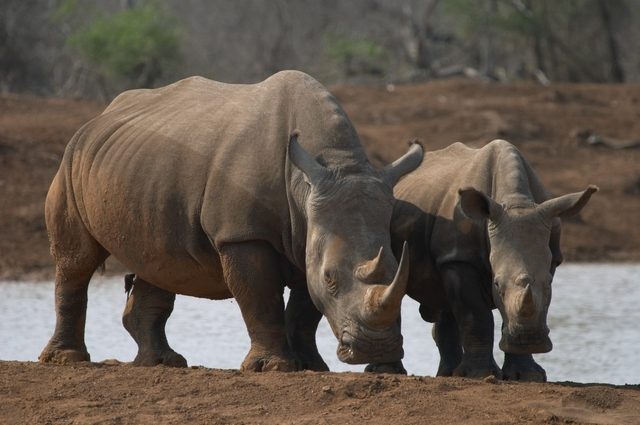
Rhinoceros
Three out of the five rhinoceros species are now considered to be under critical survival threats. After the elephant, the rhino is the world’s second-biggest mammal. The rhino averages 1.5 tons in weight. It has a firm skin and large horn in the center of its face. Poachers prize a rhinoceros’ horn, which is nothing but keratin, the same protein that makes up fingernails and hair in most animals including humans. The rhino also has a relatively small brain compared to its size. It regularly gets to 60 years old as it has no real predators apart from hunters. Rhinos have a keen sense of smell and hearing, but it is well known for having pathetically poor eyesight. The rhinoceros spends time in thick savannas and forests where there is plenty of food and sufficient coverage for hiding. It is an herbivore and eats leaves, grasses, shoots, fruits, and buds to gain the nutrients that it needs to grow and survive. Although it is an herbivore, it is known for its aggressive nature and will charge towards oncoming predators to scare them away. Poachers typically catch them when they drop their guard while drinking from a water-hole.
5 Frequently Asked Questions About The Big Plains Wild Herbivores Of Kenya
To receive a colourful digibook about animals with videos, images and text, please fill out the following form or simply email us on safaris@safari-center.com

